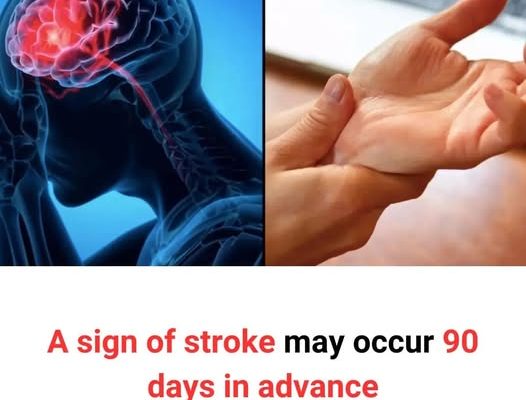Stroke symptoms can appear very early, but they are often overlooked.
Stroke is the leading cause of death in the United States, with nearly 800,000 people suffering from a stroke each year. On average, a stroke occurs every 40 seconds in this country.
However, according to HuffPost, we can equip ourselves with the knowledge to recognize stroke symptoms, understand risk factors, and protect ourselves from this type of cerebrovascular accident.
Dr. Brandon Giglio, Director of Vascular Neurology at NYU Langone Hospital (USA), stated that about 85% of strokes in the U.S. are ischemic strokes, while the remaining 15% are hemorrhagic strokes. In many cases, stroke symptoms may appear days, weeks, or even months in advance.
Below are some warning signs of stroke that everyone should know.
Transient Ischemic Attack – An Early Sign of Stroke
A transient ischemic attack (TIA) can be a warning sign of stroke. According to Dr. Ahmed Itrat, Medical Director of Stroke at Cleveland Clinic Akron General:
“A transient ischemic attack causes mild neurological symptoms that resolve on their own, without causing permanent nerve damage.” In other words, a TIA occurs quickly and does not lead to brain damage.
However, Dr. Giglio emphasized that the absence of brain damage does not mean you should ignore TIA symptoms.
“It could indicate that you are at risk of having a stroke within the next 48 hours, and certainly within 7, 30, or even 90 days.”
The “BEFAST” Stroke Warning Signs
Experts recommend remembering the acronym “BEFAST” to recognize stroke symptoms quickly:
- B (Balance) – Difficulty maintaining balance or loss of coordination.
- E (Eyesight) – Vision changes such as blurriness, loss of vision, or double vision.
- F (Face) – Facial changes, such as one side of the face drooping or an asymmetrical smile.
- A (Arm) – Weakness or numbness in one arm.
- S (Speech) – Speech difficulties, such as slurred or incoherent speech.
- T (Time) – Act immediately and seek medical help if any symptoms appear.
Dr. Joshua Willey, a stroke neurology specialist at Columbia University (USA), noted that “T” could also stand for “terrible headache” – a sudden and severe headache.
All three experts emphasized that if any of these symptoms appear, even briefly, you should seek medical attention immediately.
Dr. Willey stated:
“Typically, a transient ischemic attack lasts no more than 5 to 10 minutes and certainly under an hour. However, BEFAST symptoms may last only 30 to 60 seconds.”
For this reason, do not hesitate even for a minute if you experience arm weakness or sudden blurred vision.
Managing Stroke Risk Factors
You can take control of your stroke risk factors.
Dr. Itrat explained that conditions such as high cholesterol and high blood sugar, if left uncontrolled, can increase the risk of stroke.
According to the Centers for Disease Control and Prevention (CDC), people should increase physical activity, quit smoking, adjust their diet, or take medications to manage conditions like high blood pressure to reduce stroke risk.


